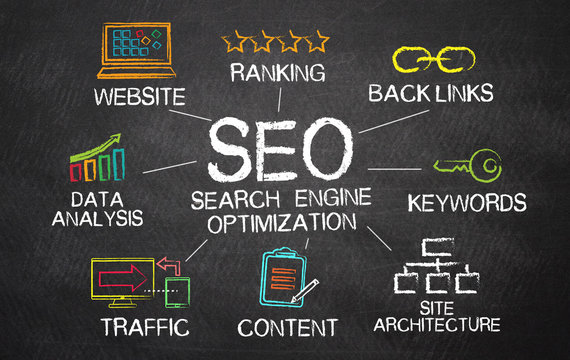Table of Contents
Content Marketing: The Ultimate Guide to Grow Your Brand in 2025

1. Introduction: The New Age of Marketing
Let’s be real—customers are tired of ads. They skip them, avoid them, or block them altogether. The winners? Brands that educate, entertain, and connect with valuable content.
Welcome to the world of content marketing—where value beats volume, and narratives sell more than hype pitches.
At TheNextDigital, we believe content marketing isn’t a strategy—it’s the foundation of modern brand building.
2. What is Content Marketing?
Content marketing is the art and science of creating, publishing, and distributing valuable, relevant, and consistent content to attract and retain a clearly defined audience—and ultimately, drive profitable customer action.
It’s not selling. It’s fixing.
Think about it: Blogs, videos, social media updates, podcasts, eBooks—all intended to fix your audience’s issues and build trust.
If there’s a bullhorn method to old-school marketing, content marketing is a chat.
3. Why Content Marketing Still Works in 2025
Here’s why content marketing remains robust in today’s era:
- Eople are conducting more research than ever. Content allows them to find you naturally.
- It builds trust over time—whereas ads disappear after a few clicks.
- Google likes good content. Good content = higher search rankings.
- It supports every funnel step. Awareness, conversion, and retention.
- It’s budget-friendly and long-term. A blog post today can bring leads for years.
Whether you’re a SaaS startup or a local bakery, content builds a bridge between your business and your customers.
4. Benefits of a Strong Content Marketing Strategy
Here’s what an effective content marketing strategy can unlock:
Higher Brand Awareness
Posting regularly helps people remember your name and builds brand recall.
Organic Traffic Growth
Evergreen content (e.g., “how-to” tutorials) can bring thousands of monthly visitors through SEO.
Enhanced Engagement
Engaging, eye-catching content immerses your readers and returns them.
Enhanced Conversions
Good content builds trust, and trust creates credibility—and credibility equals sales.
Customer Retention
Content isn’t just about acquisition; it converts existing customers too.
5. Content Types That Drive Results
All right, let’s break down the most effective content types:
1. Blog Posts
Best for SEO and answering specific questions.
2. Videos
Most engaging format—best for tutorials, storytelling, or product demonstrations.
3. Infographics
Display information-rich content in an eye-pleasing manner.
4. Podcasts
Great for building deeper connections and thought leadership.
5. Social Media Posts
Mini-bursts of content to stay top-of-mind and interact with your audience daily.
6. Email Newsletters
Lead your subscribers with the best curated content and news.
7. Case Studies & Testimonials
Prove yourself through real-life success stories.
8. eBooks & Whitepapers
Long-form content that goes deep and captures leads.
6. Step-by-Step: Building a Content Marketing Strategy
Let’s go through how to build a content marketing plan from scratch.
Step 1: Define Your Goals
- More traffic?
- More leads?
- Higher conversion rates?
Link your content with your business goals.
Step 2: Know Your Audience
Use buyer personas to understand:
- Who they are
- What are their issues
- Where they consume content
- What motivates them to buy
Step 3: Keyword Research
Utilize tools like Ahrefs, SEMrush, Ubersuggest, or Google Keyword Planner to find content opportunities that your audience is seeking.
Tip: Utilize long-tail keywords for quicker wins.
Step 4: Create a Content Calendar
Organize your content by week or month to maintain consistency. Have:
- Topic
- Format
- Keyword
- Publication date
- Channel of distribution
Step 5: Create High-Quality Content
Focus on quality rather than quantity. Ensure each one:
- Solves a problem
- Has a clear CTA
- Is SEO-optimized
- Is gorgeous
Step 6: Share Your Content
Don’t post and pray—share it on:
- Social media
- Email lists
- Communities (Reddit, Quora, etc.)
- Paid ads (for high-value content)
Step 7: Optimize & Refine
Keep an eye on key metrics:
- Organic traffic
- Bounce rate
- Time on page
- Conversions
Then maximize what’s getting the attention—and cut away what isn’t.
7. SEO & Content Marketing: The Winning Duo
SEO is the fuel, and content is the engine. Here’s how they work together:
Use Primary & Secondary Keywords
Integrate naturally into headings, intro, and conclusion.
Optimize Title Tags & Meta Descriptions
Make them keyword-rich and attention-grabbing.
Use Internal Linking
Guide users to similar content on your site (and enhance crawlability).
Mobile-Friendly + Fast Loading Pages
Google favors user experience.
Keep Content Fresh
Refresh older blogs with new information and insights.
8. Content Distribution Channels
Publishing is merely 50% of the task. Here’s where to amplify your content:
- Facebook, LinkedIn, Instagram (based on audience)
- Quora, Reddit (for answering niche questions)
- Email marketing (to your subscribers)
- Influencer collaborations (especially for product content)
- YouTube & Shorts (if creating video content)
Your task: Get your content where your audience already hangs out.
9. Tools of Content Marketing That You Should Get Familiar With
Here’s a quick list of tools to make your work simpler:
| Purpose | Tool |
| Keyword Research | Ahrefs, SEMrush, Ubersuggest |
| SEO Optimization | Rank Math, Yoast |
| Content Planning | Trello, Notion |
| Graphic Design | Canva, Adobe Express |
| Writing & Editing | Grammarly, Hemingway |
| Analytics | Google Analytics, Hotjar |
| Scheduling | Buffer, Hootsuite |
10. Common Mistakes and How to Avoid Them
- Prioritizing Quantity Over Quality
Solution: Publish fewer but more effective content.
- Ignoring SEO Basics
Solution: Use keyword research tools and optimize all on-page elements.
- Lack of Strategy
Solution: Create a content calendar with clear objectives.
- No Promotion Strategy Solution: Create a distribution checklist for every piece.
- Variable Schedules Solution: Use tools to schedule in advance and maintain a rhythm.
11. Real Brand Examples That Nailed Content Marketing
HubSpot
- Built an enormous library of content for marketers
- Web dominance via SEO and ranking for thousands of keywords
Zomato
- Humorous, genuine social media content
- Boosts brand recall and interactions
Beardbrand
- Grooming tip videos on YouTube
- Built a devoted following that converts
Canva
- Tutorials, user stories, and a vast blog
- Organic growth and product education drive
12. Small Business & Startup Content Marketing
With a shoestring budget, content can be your secret weapon. This is how:
- Start with a single anchor format (e.g., blog or video)
- Repurpose all content (1 blog = 5 social posts + 1 email)
- Leverage free software like Canva, Ubersuggest, and Google Trends
- Leverage local SEO and community-based content
- Collaborate with micro-influencers and niche blogs
Content levels the playing field. It enables you to compete against bigger brands without large budgets.
13. The Future of Content Marketing
Here’s what we’re seeing in 2025 and beyond:
- AI-Supported Content Creation: Human + AI = smart content creation
- Voice Search Optimization: Think “how-to” and conversational searches
- Interactive Content: Quizzes, polls, calculators
- Personalized Content: User behavior and preference-driven
- Sustainability & Values-Based Content: Brands with values win
The future? More human, more helpful, more honest.
14. Final Thoughts
Content marketing is not a short-term game—it’s an investment.
But if done correctly, it can:
- Drive leads
- Build authority
- Build loyal customers
- Reduce ad spend over time
- Make your brand a trusted voice
At TheNextDigital, we help companies like yours create content strategies that succeed—without burning your budget.
15. FAQs
Q1: Can content marketing be applied to B2B businesses?
Absolutely! B2B purchasers do research. Thought leadership, whitepapers, and case studies work brilliantly.
Q2: How often should I publish content?
Target 1-2 great posts per week, then scale. Consistency trumps frequency.
Q3: When do I see the outcome?
Content marketing is a long game. Most companies realize traction in 3-6 months, with significant ROI after one year.
Q4: What’s the difference between content and copywriting?
- Content writing teaches and establishes trust.
- Copywriting sells.
A winning approach employs both.
Q5: Do I need to hire a content marketing agency?
If you lack in-house capacity or expertise, yes. Companies like TheNextDigital offer proven procedures, consistent output, and measurable ROI.


